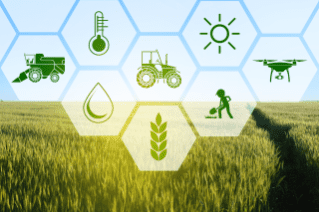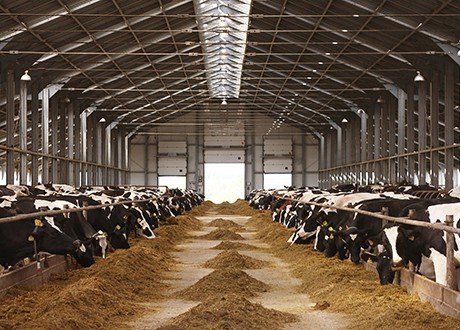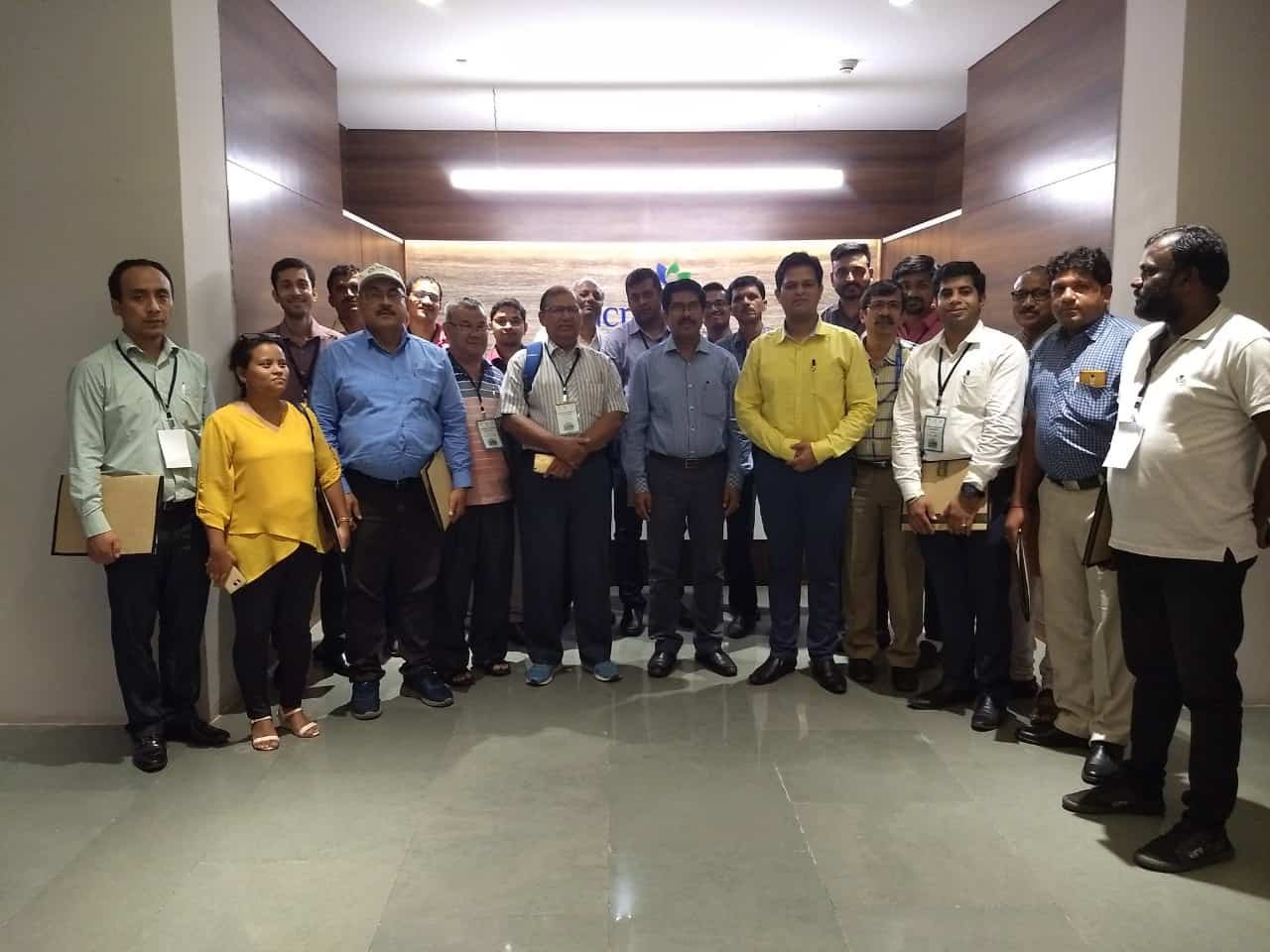By H. P. Singh,
Founder and Chairman,
Confederation of Horticulture Associations of India, (CHAI), New Delhi.
Agriculture development in the past has been means of food and raw material, which is now seen as means of employment-led economic goals, alleviation of poverty and self–reliance through its linkages and a multiplier effect. Globalisation of agriculture has opened up new opportunities and also the challenges of stiffer competition. The challenge thus demanded for adjustment of the structure of the economy to resonate with internal stipulation. Thus, diversification to horticulture has emerged as the best option, to address nutritional adequacy, employment opportunities, farm income enhancement and use of natural resources and above all, for Enhancing farmers’ income and promoting enterprises.
The emerging trend worldwide and also in the country is indicative of a paradigm shift in dietary needs of the people, with rise in the income and urbanisation, demanding more horticultural produce. In the scenario, where more than 300 million people are malnourished, while millions of people are below poverty line, there is need for improving quality of life through food and nutritional security. The trend of development in the past especially during the last decade has been satisfying. Adoption of horticultural crops in systematic manner has improved quality of life of people in many of the regions of the country. Horticulture, generally referred as gardening, has expanded in its scope and activities, moving from rural confine to commercialisation, and is providing best option for land use, nutritional security, employment opportunity, health care and above all environmental services. Indian, horticulture development has five phases of growth, characterised by pleasantry and hobby in pre-independent India, has transformed now through adoption of innovations in fifth phase of growth, heralding Golden Revolution. Expanding horticulture is demanding knowledge, skills, and technologies for growing plants intensively to achieve efficient, profitable and competitive horticultural industry.
The sector includes a wide variety of crops under different groups such as fruits, vegetables, root and tuber crops, mushroom, spices, floriculture, medicinal and aromatic plants, nuts, plantation crops including coconut and oil palm. Government of India has accorded high priority for the development of this sector, particularly, since the VIII Plan-and beyond, which has impacted production, reaching to 311.7 million tonnes in 2017-18 from 96 million in 1990-91, contributing 34.45 per cent to the AGDP only from 11 per cent area. This trend of development in horticulture has been termed as Golden Revolution. However, challenges to feed growing population suiting to their dietary needs and nutritional requirements, is demanding science and technology led development, backed by enabling environments and resource utilisation strategies. Change in dynamics of horticulture is now for health care through the use of horticultural produce for the treatment of many diseases, therapy, and environmental services and above all to the improved quality of life of the people living in rural as well as in urban areas. The paradigm necessitates for knowledge empowered human resources, who can provide leadership in technology development and policy formulation to attract investment and keep the pace of development.
Most significant change in the last two decades has been the use of technologies and private sector investment for production system management. Impact of change in technologies like new cultivars, use of micro irrigation, improved quality seeds and plants and production system management is visible in terms of increased production productivity, availability and export. Undoubtedly, horticulture sector has moved dynamically despite numerous challenges and shortcomings, and is in crucial phase of development needing initiatives for sustainable development. To achieve the targeted production, of 360 in the year 2020-21and 451 million tonnes in the year 2022-23, stipulated vertical growth will be required through the use of new cultivars, efficient water and nutrient management, effective plant health management coupled with strategies for reduced post-harvest losses and empowered human resources. This will require appropriate innovations and investment. Protected cultivation has shown yield enhancement up to 4 times, which is a potential technology to achieve vertical growth, but would need investment and technological upgradation. Plant architectural engineering and management can mitigate the problem associated with seasonality in many crops and the enhanced efficiency in water management, utilising modern techniques, shall reduce water stress. Since, horticulture provides variability and has potential to adjust in different agro-climatic situation, technology-led development is inevitable, where in horticulture education to empower the youth with new knowledge becomes essential.
Recognising the need for specialised Human Resource in horticulture, first College of Horticulture was established in the year 1972, in Kerala Agricultural University (KAU), Kerala, for strengthening research and extension activities in horticulture. Thereafter, faculties of horticulture were added to majority of agricultural universities. Dr. YS Parmar University of Horticulture and Forestry, Solan, Himachal Pradesh, is the first horticultural university, which earned a unique distinction, not only in the country, but also in whole of Asia to impart teaching, research and extension education in horticulture, forestry and allied disciplines with Himalayan perspective. This University provided an insight for the establishment of horticultural University in the country, with its relevance in given agro-climatic situations. There are 7 horticultural University exclusively for the horticultural education, and the Dr YSR Horticultural University, Venkataramannagudam, West Godavari, Andhra Pradesh, is one of the best, with the objectives to enhance the growth of horticulture sector by providing leadership in teaching, research and extension services in horticulture and allied sciences through continuous innovations and assimilation of emerging technology. Recognising the benefits from Horticultural University, many of the states are planning for new university with focus on horticulture.
This is befitting occasion to talk about education, which is so critical to development. National Agricultural Education Systems, which had led to the development of human resources, is a key to transformation in agriculture and horticulture. But needs and relevance continue to change, thus education system has to be dynamic, vibrant and responsible. Many of disruptive technologies are becoming important, to improve ability to take up important task and challenges. The employment situation has also changed dramatically, job in public sector have declined but opportunities have emerged in corporate sector and also for self-employment. It is often said to produce graduates who can be observed in the industry. Today, in many businesses, people talk about not having enough talent, and there are lots of graduates looking for jobs. This is a disconnect. How do we bridge this divide and provide the kind of people industry requires? The situation demands for reorientation of the curriculum to provide the skills to meet the challenges.
In this context value added agricultural education is becoming important which is not merely a transfer of knowledge but also a skillful management of knowledge for getting maximum output, sustainability in production and a clear augmentation of employment opportunities. This will help in building confidence for starting one’s own enterprise. Education is never an end in itself. Learning is a life time process. Education should be comprehensive, holistic, all-encompassing to embark on a journey to self -development and self fulfilment. From candidates fresh out of college we except good analytical skills. A candidate, who can logically analyse and deduce solutions from a given set of facts, can work on the technical problems that we face every day.
The overall stocks of horticultural human resources required to meet the requirements of various segments of horticulture have been projected to keep pace with the development.It is assed that the stock requirement of human capital in horticulture sector would grow to about 95,902 by the year 2020, which was about 62,583 in 2009-10. The estimated demand-supply scenario in 2020 will be that demand (95,902) will far exceed the supply by 26,030 leaving the gap of about 73 per cent, if new facilities of horticultural education are not created. The students coming out of the universities/colleges do lack professional skills and need help especially those, who are interested and have aptitude to start their own enterprises. Accordingly, skill development for attending to demanding jobs in horticulture is very important. Starting of diploma, certificates and polytechnic courses for specific skills of horticulture aims to reduce the gap between demand and supply.
National Agriculture Policy 2000 categorically emphasised on integrated development of horticulture, which should be knowledge based, technology driven and farmers’-centric. The policy also emphasised on rural institutions, reforms and development of infrastructure. But, there is no policy document for horticulture, however focus has been given on post-harvest management in the policy paper of food processing industries. Most notably policy change is related to storage, processing and marketing of horticultural produce. Backward and forward linked marketing with reform in agriculture produce marketing act, encouragement for contract farming are some of the important policy changes which are likely to impart production, quality and competitiveness of horticultural produce. Other area of reform needed is in aggregating of land law, which can help in better investment as well as adoption of technology. To enhance the delivery there is a need for innovations in PPP mode for its better adoption in horticulture.
The main challenges to horticulture sector have been the investment and capital, access to technology and the initial learning curve to develop the required skills. An attempt to address many of the issues was made through mission mode approach to horticulture by launching of Technology Mission for Integrated Development of Horticulture in NE region including Sikkim, in the year 1999. Based on impact and success of this Mission, a stepping stone, it was was extended to Himalayan states, in 2003, and with objective of doubling production of horticultural crops, as announced on 15th August, 2003, by the then Honourable Prime Minister, the National Horticulture Mission was launched for rest of the country in 2005. Both these Mission continued and was merged subsequently for continuance as Mission for Integrated Development of Horticulture. National Programme in Mission mode in horticulture as well as on Micro-irrigation ushered in horticulture revolution referred to as Golden Revolution, in the country, providing opportunity for the farmers to enhance farm income and attract educated youth to farming, as horticulture has proved to be economically rewarding and intellectually satisfying. In call of the nation for doubling farmers’ income horticulture has been identified to be a prime mover in achieving the goal.
With a surge in the middle and upper income group in the population, demand for fresh fruits and vegetables is bound to increase several folds. In this context, in addition to more food, the young, rich and urban population would demand diversified nutritious and safe food of high quality, and as a result of this there will be pressure on supply of horticulture produce. The report of committee on Doubling Farmers Income (DFI), 2018, estimated that by the year 2022-23, production level of 451 million tonnes has to be achieved (Fig. 1). The report states that it can be achieved through 2.8 per cent increase in area and 3.1 per cent in productivity. It is achievable, as evident that, from the year 2000 to 2016, horticulture sector has growth rate of 5.8 per cent owing to technological changes, investment and policy environment. Many new technologies of seeds and planting material, drip and fertigation, greenhouse, hydroponics, marketing models and quality assurance through branding have been adopted and the success stories are replicated. Past trend shows that targeted production of 360 million MT at the end of 2020, envisaged in the year 2000, is achievable, as we have reached to production of 311. 7 million tonnes in 2017-18.
Thus, there are options of opportunities and challenges, which will need attention. The issues to be addressed are: Innovations in technologies through institutional support as well as import of knowledge and technological backed by the development through skills. Development strategies should be for cluster approach linked with post-harvest management and marketing, quality seeds and planting material, precision farming and smart horticulture, environmentally controlled horticulture, efficient management of nutrients and water, and enhanced ICT use to add efficiency to input management including use of Block Chain Technology and artificial intelligence and knowledge transfer.
(Image.1)
Fig. 1- Targeted in document “Perspective of Horticulture”, Ministry of Agriculture, 2000, Target made in respect of DFI, 2017. Estimated with assumption of changes, dietary needs, urbanization, population growth, income and trend in growth, 2011, report submitted to Planning Commission.
It is evident that there is a fast changing technologies and also the inspiration of the people. Therefore, the following need due consideration:
Modern production system may be adopted focusing on smart management system to maximise the output with given inputs like nutrient, water, plant care etc.
Integrated water management may be adopted with focus on Source to Root, to improve productivity of water, considering that water is most critical in horticulture.
The micro-irrigation may be classified as priority infrastructure to benefit farmers. Micro irrigation may be invariably promoted with fertigation.
Protected cultivation, hydroponic & aeroponic must be adopted for improving productivity and quality of produce. Focus or Renewable energy will help in reducing the cost of energy.
Infrastructure, talented faculties and required land resources for research and enterprise development must be with the university to provide required support to development.
Epilogue
Horticulture, which was a pleasantry before independence of the country has moved from the rural confine to commercialisation with the turn of the century, keeping a growth rate of 5.86 per cent with increasing demand, after 2000, referred to as Golden Revolution, and is projected to grow above 6 per cent, to achieve doubling of farmers’ income, food and nutritional security, health care and environmental services. The achievements in horticulture till date are attributed to infrastructure for the research, investment of government with a mission mode approach and enabling policy initiatives. With the projected growth, development is happening with innovative models of technology and its adoption, and the targeted production is achievable, but, not in usual mode of approach. The mission approach, which was envisaged to address all the issues in links of the chain from production to consumption in integrated manner, has proved to be more successful in achieving the goals.
However, there are concerns about competitiveness, which calls for efficiency in all the activities, starting from conceptualisation to production, post-harvest and cold chain management, transportation, marketing and brand management till it reaches to consumers. This calls for Value Chain Development and Management with enhanced water productivity to benefit all the players in the chain and provide the produce to the consumer as per their requirement. Therefore, it is imperative that horticulture be declared as priority sector for investment and mission for Smart horticulture be launched with focus on value chain development and management on priority, which will go in long way as a prime mover of economic growth providing employment, food and nutritional security and environmental services and above all availability of produce as per the needs both for domestic and export market.
In this context, Block Chain Technology of Management, Artificial intelligence and Environmental Controlled Technologies would be inevitable. Accordingly, skill development has to keep pace with Demand, and the University has to play most significant role in years to come.
By H. P. Singh,
Founder and Chairman,















